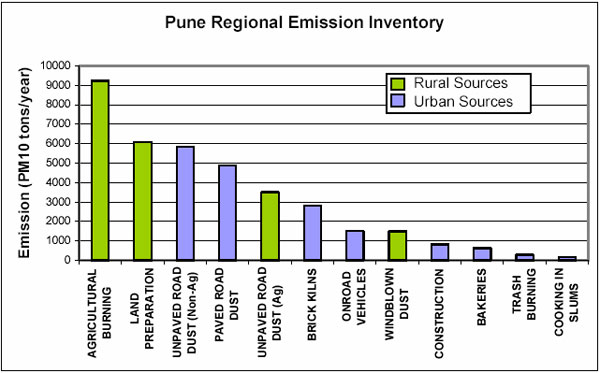Continual Improvement of Emission Estimates –
The Pune Experience (2004 to 2006)
Ajay Ojha, Rakesh Kumar, D. B. Boralkar, Prashant Gargava,
Patrick Gaffeney, Michael Benjamin, Urkarsh Mukkannawar
The Pune Experience (2004 to 2006)
Ajay Ojha, Rakesh Kumar, D. B. Boralkar, Prashant Gargava,
Patrick Gaffeney, Michael Benjamin, Urkarsh Mukkannawar
ABSTRACT
Government of India, Ministry of Environment and Forests and US-Environmental Protection Agency under the Urban Air Quality Management Project being demonstrated in Pune, India includes technical assistance and capacity building in the areas of air pollution monitoring, emission inventory, source apportionment of PM and air pollution dispersion modeling to formulate a Science Based air quality management approach.The present paper deals with the experience and improvement in the estimates of emissions in Pune through variety of approaches including technical evaluations of all the approaches as also primary data generation keeping in mind the estimations of local variables to be used in the measurement of emissions confirming the dynamic nature and scope for improved estimates.
An initial emissions Inventory project entitled “Pune Regional Emissions Inventory Study” was carried out in March 2004. With limited resources and time, rough assumptions and simplified methods were used for emission estimates and the database development. The total emissions in Pune city were estimated to be about 37,410 tons/year of PM10 in the year 2003.
Attempts were made to prepare a ward wise estimate for PM10 in Pune city considering more rigorous surveys and authentic database from various organizations. The total dust load from all the major sources other than industries was estimated to be 5408.2 tons/year in the year 2004. However, these estimates were still laden with certain limitations of emission factors and baseline data A further refinement was carried out by working out 2km x 2 km gridded approach dividing the city in to 189 grids, to serve dual objectives of highly resolved and rigid inventory and use as input to AERMOD dispersion model. The total PM10 emissions were now estimated to be 9203 tons/year in year 2005.
The experience of emissions inventory development in Pune has revealed the fact that local variables need to be identified and measured for estimating emission factors. One of the facts that have come out over and over again in all the inventories is that resuspended dust is the major contributor to PM10 in Pune
Uses of Emission Inventories
- To determine compliance with environmental regulations and treaties
- To establish permit conditions for industrial facilities
- To develop air quality control plans
- To measure progress/changes over time (trends or progress toward air quality goals)
- To use in air quality models to predict ambient concentrations, exposure, risk
The First Attempt – Overview
Objective- To develop most reasonable estimates possible within TIME and RESOURCES
- A diverse team of 40 experts from several of India’s governmental and educational institutions
- Seven days of intensive, handson effort
- First-ever comprehensive emission estimates for the majority of the emission sources in the Pune region
- Extensive relational database system was developed
- Automated batch loading,manual entry capability, and data query and reporting functions

